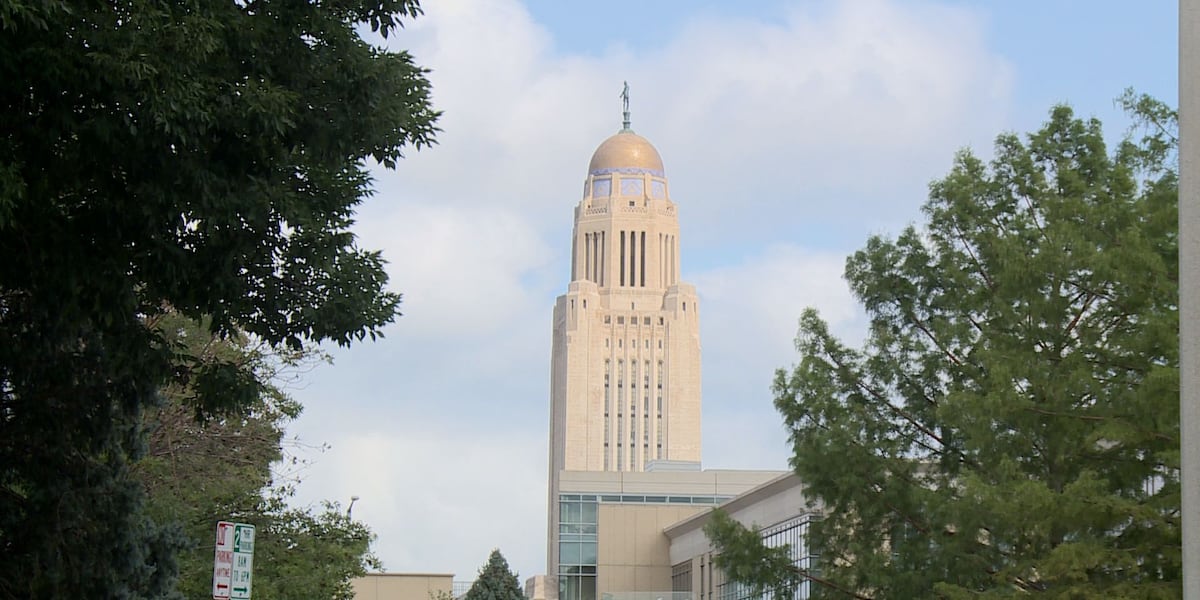Utah
Collin Sexton leads Utah Jazz to a nice win over the Portland Trail Blazers

The Utah Jazz came away with a decisive victory over the Portland Trail Blazers behind big games from multiple guys 122-114.
With the Jazz missing both Keyonte George and Jordan Clarkson, Collin Sexton came play. But he didn’t just play, he dominated the Portland Trail Blazers with his infamous brash play and style. The greatest thing about Sexton is that everything felt like it was done within the office. It wasn’t long ago that Will Hardy telling the team that if you don’t play hard, if you don’t pass the ball, if you don’t give a s___ about the Jazz, you won’t play. Sexton seems to have embraced every part of that and tonight was one of those nights where it showed. Sexton ends the night with 27 points and 4 assists and did it while shooting 11/17 from the field and 2/5 from three.
Walker Kessler was close to breaking the Utah Jazz triple-double drought with 10 points, 10 rebounds, and 7 blocks. Kessler was a monster all night and is looking more and more like his rookie self. So much of the issues with Kessler this season have seemed mental and it’s nice to see him growing in confidence.
Simone Fontecchio had another big night as well. He scored 24 points with 5 rebounds but played a great all around game to help lead the Jazz to what was at one point a 30+ point lead. There are a lot of success stories with this Jazz team right now and Fontecchio is absolutely one of them.
Finally, we got more time with Taylor Hendricks on the floor and he continues to impress. His defense is sparkling right now, his ability to do everything on the defensive end whether it’s get hands on balls in the passing lane, block shots from the weak side, switch onto the perimeter, and so many other things is making him seem like the Jazz had another homerun pick. The fact he shot 2/5 from three in this game and Will Hardy is running plays to get him shots tells you just how good he might become. What a steal for the Jazz.

Utah
Utah Jazz 2025 NBA Draft Profile: Liam McNeeley

The Utah Jazz have four selections, 5, 21, 43, and 53, in the June 25th NBA Draft. Because of this, they’ll be able to cast a wide net of players that they could select to add to their team next season.
That has led to an exciting and busy time for fans as we wade through the waters and search for who the team could select. Next up on our list is Liam McNeeley, the forward from Connecticut who could surprisingly be available at 21.
Stats: 14.5 points, 6.0 rebounds, 2.3 assists, 0.6 steals, 0.2 blocks, 38.1% FG, 31.7% 3P, 86.6% FT
Draft Range: Middle to late first round
A year ago, I pleaded for the Jazz to go up and get a different UConn Husky in Stephon Castle. 12 months later, the Jazz could have a different player from Dan Hurley’s team fall right into their laps with their second pick in the first round.
McNeeley is a big wing standing at 6’8 and 215 pounds. Your opinion of him likely comes down to how you view his shot. Billed as an elite shooter, McNeeley shot under 32% from deep on the year despite his reputation. On top of that, his athletic limitations led to struggles within the arc as well.
I do believe in McNeeley as a shooter. His form is picturesque, he has a quick release, he shot nearly 87% from the charity stripe, and his reputation as a knock-down shooter all give me confidence in him becoming a spacing weapon at the next level.
While the shot is the main draw to McNeeley, he’s more than just a shooter. He’s a smart passer with the upside to operate as a high feel connector or secondary playmaker as he develops. While I don’t see him turning into a high-usage guy, he’s intelligent and makes winning plays for his team offensively.
McNeeley is also a solid rebounder for a wing. Because of his above-average rebounding and size, I wonder if McNeeley will be at his best as a floor-spacing power forward at the next level. Some of the higher-end outcomes I can see for McNeeley would be Nets forward Cam Johnson and former Jazzman Bojan Bogdanovic.
Both Johnson and Bogdanovic make their money as floor spacers. They’re the same height as McNeeley, have similar athletic limitations, and are not heralded for their defense.
Speaking of defense, I wouldn’t say it’s a strength for McNeeley. His steal and block numbers in college were startlingly low. He doesn’t possess the foot speed to stay in front of drivers, and, while he is tall, his 6’8 wingspan isn’t impacting many plays.
Overall, if McNeeley is available at 21, he could certainly be in play for the Jazz. A projectable shooter, McNeeley will need to become more reliable and consistent from deep, but NBA guards should manufacture easier looks for him. If he does enough elsewhere, he could carve out a long NBA career.
More Jazz Draft Content
Utah
Utah’s energy future – @theU

Above: Wilkes Center energy future panel discussion: from left, Laura Nelson (Idaho National Laboratory), Joseph Moore (Utah FORGE), William Anderegg (Wilkes Center for Climate Policy and Policy), Teresa Foley (rPlus Energies), Logan Mitchell (Utah Clean Energy)
At a recent panel discussion at the Wilkes Center for Climate Science & Policy’s annual summit at the University of Utah, energy experts gathered to discuss the future of alternative energy in Utah.
The panel represented a diverse cross-section of Utah’s energy landscape, featuring leaders from a national laboratory, academic research, non-profit advocacy and private industry. What emerged was a picture of a state uniquely positioned to lead in the clean energy transition, with abundant natural resources and a collaborative approach to energy development.
What also became evident during the discussion, moderated by Wilkes Center director William Anderegg, is that the U continues to be a key player in moving publicly funded research directly and often quickly to market, scaling new technologies for the benefit of all Utahns. “One Utah” and “The University for Utah” are not just aspirational mantras but actual products and services currently materializing in communities across the state. Large-scale energy production and grid expansion and resilience are no exception.
Utah’s ‘energy royal flush’
Theresa Foxley
“Utah was dealt the energy royal flush,” said Teresa Foxley, chief of staff for rPlus Energies, referencing an op-ed her company published recently about Utah’s diverse energy resources. Beyond traditional fossil fuels, Utah boasts exceptional renewable resources including solar, wind and geothermal, positioning the state for leadership in the energy transition.
Foxley’s company, a Salt Lake City-based renewable energy developer, exemplifies this potential. rPlus Energies is currently constructing the Green River Energy Center in Emery County, a massive 400-megawatt solar project paired with 400 megawatts of battery storage. When completed in 2026, it will be “the second largest project of its type in the country,” she said and represents a $1.1 billion investment in rural Utah.
The company is also developing pump storage hydro projects, a technology that pairs well with both renewable and nuclear energy by storing energy when abundant and releasing it during peak demand periods.
World-leading geothermal research

Joseph Moore
Josepth Moore, a research professor at the U, highlighted the state’s leadership in enhanced geothermal systems (EGS). He directs the Frontier Observatory for Research in Geothermal Energy (FORGE), a Department of Energy-funded project in Milford, Utah.
“FORGE is the only facility of its kind in the world, and so people around the world are certainly looking at us,” Moore stated. “We are leading the world in enhanced geothermal development already.”
Unlike traditional geothermal systems that rely on naturally occurring hot springs, EGS creates geothermal reservoirs by fracturing hot rock deep underground. The FORGE project has made significant advances in reducing drilling costs and developing new stimulation techniques that have attracted interest from major energy companies.
Moore emphasized geothermal’s enormous potential: “Tapping even 2% of the energy between two and six miles would give us more than 2000 times the yearly US energy needs. Keep in mind, this is clean. This is benign, very low environmental impact, very low induced seismic risks.”
Nuclear’s role in a clean energy future

Laura Nelson
Laura Nelson, Idaho National Laboratory’s (INL) regional engagement lead in Utah, discussed how nuclear energy can contribute to a reliable, clean energy future. Often considered “the nation’s nuclear energy lab,” INL, located in Idaho Falls, has been at the forefront of nuclear energy research for 75 years.
“We have a vision to change the world’s energy future,” Nelson said, describing INL’s mission to create “a resilient and sustainable energy future for everyone…that’s affordable, reliable, resilient and accessible.”
Nelson highlighted the growing interest in advanced nuclear reactors in Utah and throughout the West. Unlike the large nuclear plants built in the 1970s, she explained, these newer designs include small modular reactors (SMRs) and micro-reactors that offer flexibility for various applications, from providing consistent power for AI data centers to supporting military operations in remote locations.
“We need power that’s available when other resources may not be available, that we can call on 24/7, that can be there to meet our energy needs when maybe other resources aren’t available, or if we have failures on the system,” Nelson explained, emphasizing the importance of “firm power” in an increasingly renewable-heavy grid.
Clean energy economics and climate action

Logan Mitchell
Logan Mitchell, a climate scientist and energy analyst with Utah Clean Energy, brought the climate perspective to the discussion. As a nonprofit organization that has worked for 25 years to accelerate climate solutions in Utah, Utah Clean Energy focuses on decarbonizing buildings, transportation and the electricity sector.
Mitchell highlighted how economics is now driving the clean energy transition: “Clean energy is the most cost-effective form of energy production. It’s just more efficient…right now. This is the economics, and the efficiency of it is really overtaking other motivations.”
He also emphasized how renewable energy is bringing economic benefits to rural communities through tax revenue: “This pays for the local community center, the pharmacies and the pharmacists and the hospitals in those communities and is giving a lifeline to those communities.”
Collaboration as Utah’s strength
A common theme throughout the discussion in front of an appreciative late-afternoon crowd was Utah’s collaborative approach to energy development. The panelists agreed that Utah’s pragmatism and willingness to work across different energy resources has positioned the state as a leader in energy innovation.
As Mitchell noted, “We all need to get there together. We can’t leave behind the communities that powered us in the past. We all need to get there together.”
When asked about Utah’s electricity mix in 2035, the panelists offered varied predictions but generally agreed that the state would see more renewable energy, storage solutions and potentially nuclear power in its future. Mitchell suggested the grid could ultimately reach about 70% wind and solar with 30% “dispatchable” resources like geothermal, nuclear and hydropower
For Utah to overcome barriers to scaling these technologies, the panelists identified several challenges: misconceptions about renewable energy reliability, regulatory hurdles and permitting timelines, technological limitations and costs. Even so, they remained optimistic about Utah’s potential to lead in clean energy development through continued innovation and collaboration.
Higher education’s impact happening now
As Utah’s flagship RI university, the U is a critical player in the future of energy production in the Beehive State. Beyond hosting the 2025 Wilkes Climate Summit, which annually convenes leading policymakers, and nationally recognized scientists, foundations, and innovators to discuss the most promising and cutting-edge solutions for climate change, the U demonstrates repeatedly how academics and research translate directly and often quickly to public benefits.
As Nelson summarized: “Utah is a special place, and I appreciate that we often come together collaboratively when we disagree upon solutions, and our energy system is a critical part of that, because it’s so important to our quality of life, to our economies.”
Utah
Audit finds problems with Utah public school construction standards

SALT LAKE CITY — A new performance audit released Tuesday by the Office of the Legislative Auditor General (OLAG) reveals consistent problems across the state when it comes to construction standards for public school projects.
The OLAG says that the Utah State Board of Education (USBE) is not sufficiently overseeing school constructions and that the legislature should seek alternatives.
One cornerstone of public safety in schools is how those facilities are built. In recent years, there is plenty of building being done.
“Since 2019, [USBE] have overseen over $3.6 billion worth of constructions,” said Jesse Martinson with OLAG, who helped manage this audit.
But does all that work meet state standards?
“We looked at 30 projects and found that 87 percent (26 of the projects) did not receive a permit from USBE,” Martinson said.
The legislative auditor general found that it often hasn’t. In another example, out of 41 local districts statewide, only five of their building officials had proper code certifications.
“These codes represent the minimum standards to protect the life and safety of occupants,” said Jake Davis, who’s credited as the lead performance auditor on this report with OLAG.
Davis says there were also problems with inspection reporting compliance, from projects missing plan reviews to multiple schools not building firewalls.
“We are at a decisive point in the future of oversight of school construction,” said Deputy Superintendent Scott Jones with USBE.
Jones says the state board requested this audit because while they have a process for handling non-compliant buildings, resources are limited.
“It doesn’t go unresolved or unnoticed – it just takes time,” Jones said. “Myself and one other position are dedicated to school construction oversight.”
Another issue the audit uncovered was that one school district’s bid practices were concerning.
The unnamed district gave 18 construction projects exclusively to one contractor since 2014, with the costs totaling up to over $250 million.
The auditors say this bundling tactic may not be inappropriate, but it “exhibits the appearance of impropriety.”
House Speaker Mike Schultz (R-Hooper) said any changes implemented should also aim to better benefit the taxpayer.
“Because you look at these Taj Mahals that are being built — all across the state,” said Speaker Schultz. “In many cases, it’s 25, 30, 40 percent more than what needs to be spent.”
So lawmakers now have to lay the groundwork for that future.
“There are a lot of independent inspectors out there that can be hired,” Speaker Schultz said. “I think that can be happening and, quite frankly, should be.”
Whether the answer is designating a new state agency to absorb USBE’s responsibilities, giving more power to local agencies or improving the current system, Senate President Stuart Adams said this project is a tough one they intend to tackle together.
“We all want the same things,” said Jones. “We want our kids to be educated in very safe environments and very safe buildings.”
-

 Education1 week ago
Education1 week agoHarvard Letter Points to ‘Common Ground’ With Trump Administration
-

 Culture1 week ago
Culture1 week agoBook Review: ‘Original Sin,’ by Jake Tapper and Alex Thompson
-

 News1 week ago
News1 week agoAs Harvard Battles Trump, Its President Will Take a 25% Pay Cut
-

 News1 week ago
News1 week agoAustin Welcomed Elon Musk. Now It’s Weird (in a New Way).
-

 Culture1 week ago
Culture1 week agoBook Review: ‘Death Is Our Business,’ by John Lechner; ‘Putin’s Sledgehammer,’ by Candace Rondeaux
-

 Education1 week ago
Education1 week agoVideo: Opinion | We Study Fascism, and We’re Leaving the U.S.
-

 Politics1 week ago
Politics1 week agoRepublicans say they're 'out of the loop' on Trump's $400M Qatari plane deal
-

 News1 week ago
News1 week agoMenendez Brothers Resentenced to Life With Parole, Paving Way for Freedom



















